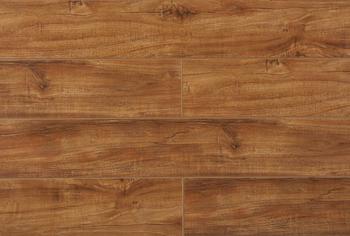 When it comes to choosing wooden flooring, the market is flooded with various brands and products, making it difficult for consumers to decide where to start. However, by following a few key criteria, you can easily identify high-quality solid wood flooring that is both durable and eco-friendly. Here are eight important factors to consider when selecting the best floor for your home.
First, pay attention to formaldehyde emissions. This is one of the most critical aspects of flooring quality. Formaldehyde levels must meet national standards, typically classified into three categories: E0 (≤ 0.5 mg/l), E1 (≤ 1.5 mg/l), and E2 (≤ 5 mg/l). According to recent regulations from China’s Health and Environmental Protection Agency, E2-grade flooring is considered acceptable, but E0 or E1 grades are recommended for interior use as they are safer and more environmentally friendly. WorldFriends Flooring, one of the top ten global flooring brands, is the only brand in China that meets E0 standards, with formaldehyde emissions just one-third of the current national limit.
Second, consider the origin of the raw materials. The type of wood used significantly affects the performance and stability of the flooring. High-quality woods like rosewood, teak, and eucalyptus are preferred. Imported materials are often superior to domestic ones. WorldFriends sources its wood from seven major global regions, including Brazil, Indonesia, and North America, ensuring the highest quality. All materials are carefully screened, with only A-grade boards selected and B- and C-grade materials rejected.
Third, check the moisture content. The moisture level of the flooring should match the installation environment to prevent future issues. National standards recommend a moisture content between 8% and 13%. WorldFriends conducts artificial moisture testing to ensure the difference between each floor and the local climate does not exceed 0.5%.
Fourth, evaluate the size. While longer and narrower planks may seem better, they are more prone to warping. Ideal dimensions are 450–910 mm in length and 90–125 mm in width. Non-standard sizes may be made from lower-quality wood, reducing overall stability.
Fifth, inspect the board quality. Look for consistent species, no cracks, decay, or defects. Check the fit during assembly—good joints should have no visible gaps or height differences. Natural variations like knots or color differences are normal and indicate real wood.
Sixth, assess the quality of auxiliary materials. Skirting boards and baseboards play a crucial role in installation and durability. Modern options like polymer-based baseboards offer zero formaldehyde emissions and additional benefits such as fire resistance and anti-static properties.
Seventh, examine the paint and finish. A good lacquer finish should be smooth, even, and free of bubbles or leaks. WorldFriends uses six-sided sealing paint to enhance moisture resistance and prevent warping or cracking.
Lastly, prioritize after-sales service. A reliable manufacturer will provide clear installation agreements and take responsibility for any issues. Choosing a brand with strong customer support ensures peace of mind and long-term satisfaction.
When it comes to choosing wooden flooring, the market is flooded with various brands and products, making it difficult for consumers to decide where to start. However, by following a few key criteria, you can easily identify high-quality solid wood flooring that is both durable and eco-friendly. Here are eight important factors to consider when selecting the best floor for your home.
First, pay attention to formaldehyde emissions. This is one of the most critical aspects of flooring quality. Formaldehyde levels must meet national standards, typically classified into three categories: E0 (≤ 0.5 mg/l), E1 (≤ 1.5 mg/l), and E2 (≤ 5 mg/l). According to recent regulations from China’s Health and Environmental Protection Agency, E2-grade flooring is considered acceptable, but E0 or E1 grades are recommended for interior use as they are safer and more environmentally friendly. WorldFriends Flooring, one of the top ten global flooring brands, is the only brand in China that meets E0 standards, with formaldehyde emissions just one-third of the current national limit.
Second, consider the origin of the raw materials. The type of wood used significantly affects the performance and stability of the flooring. High-quality woods like rosewood, teak, and eucalyptus are preferred. Imported materials are often superior to domestic ones. WorldFriends sources its wood from seven major global regions, including Brazil, Indonesia, and North America, ensuring the highest quality. All materials are carefully screened, with only A-grade boards selected and B- and C-grade materials rejected.
Third, check the moisture content. The moisture level of the flooring should match the installation environment to prevent future issues. National standards recommend a moisture content between 8% and 13%. WorldFriends conducts artificial moisture testing to ensure the difference between each floor and the local climate does not exceed 0.5%.
Fourth, evaluate the size. While longer and narrower planks may seem better, they are more prone to warping. Ideal dimensions are 450–910 mm in length and 90–125 mm in width. Non-standard sizes may be made from lower-quality wood, reducing overall stability.
Fifth, inspect the board quality. Look for consistent species, no cracks, decay, or defects. Check the fit during assembly—good joints should have no visible gaps or height differences. Natural variations like knots or color differences are normal and indicate real wood.
Sixth, assess the quality of auxiliary materials. Skirting boards and baseboards play a crucial role in installation and durability. Modern options like polymer-based baseboards offer zero formaldehyde emissions and additional benefits such as fire resistance and anti-static properties.
Seventh, examine the paint and finish. A good lacquer finish should be smooth, even, and free of bubbles or leaks. WorldFriends uses six-sided sealing paint to enhance moisture resistance and prevent warping or cracking.
Lastly, prioritize after-sales service. A reliable manufacturer will provide clear installation agreements and take responsibility for any issues. Choosing a brand with strong customer support ensures peace of mind and long-term satisfaction.Survey Prism,Surveying Micro Prism For Optics,Surveying Ads Micro Prism Series,Surveying Micro Prism
Changzhou Precision Surveying & Mapping Instrument Co.,Ltd , https://www.surveyingfactory.com